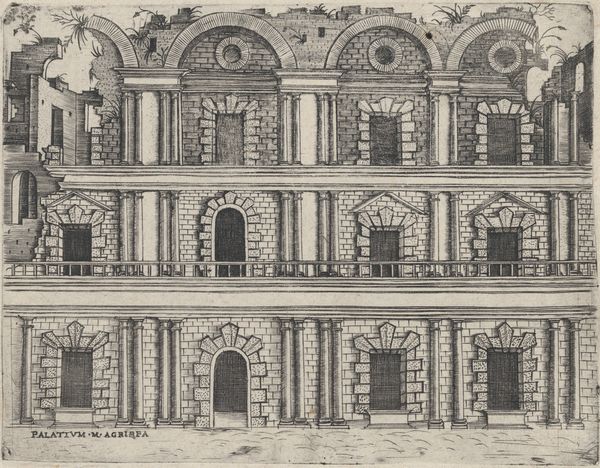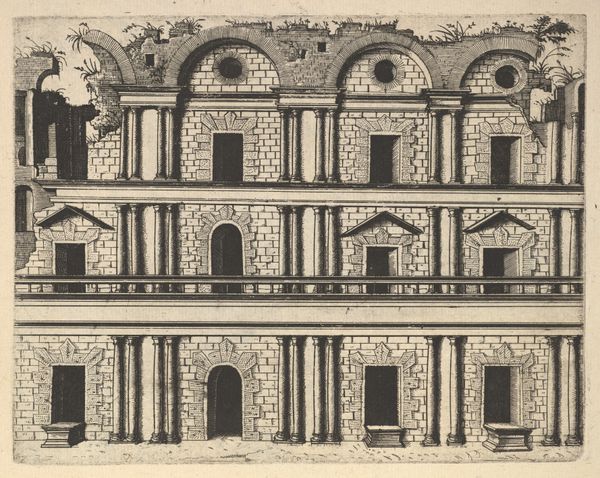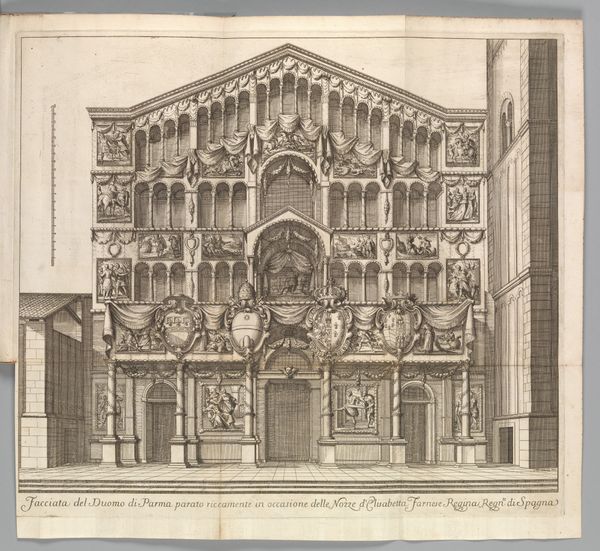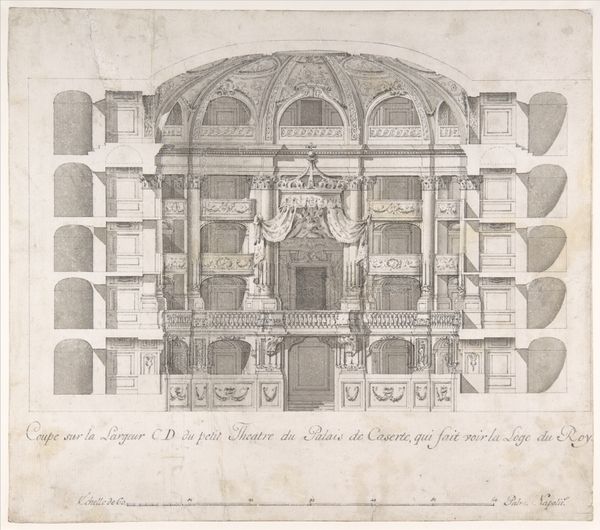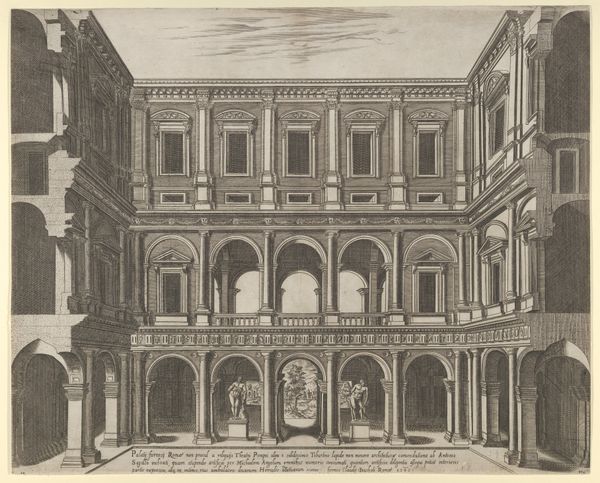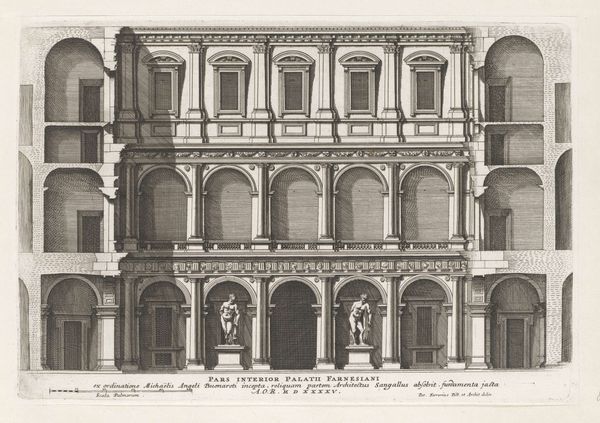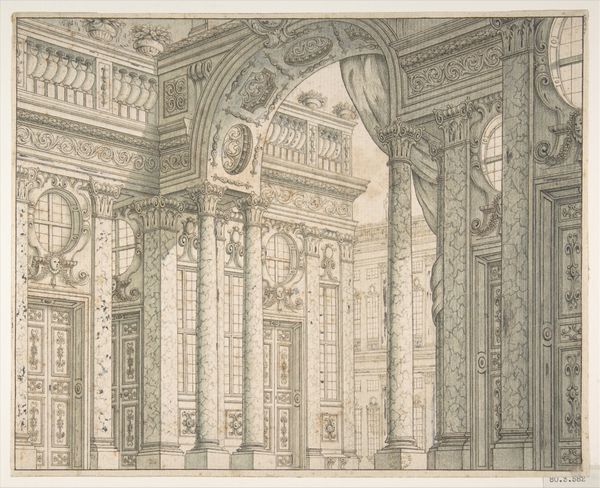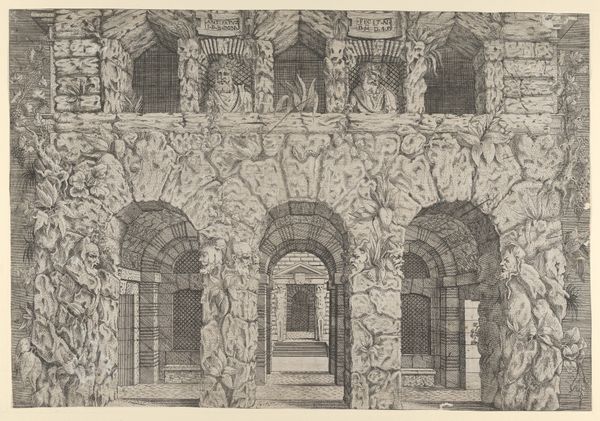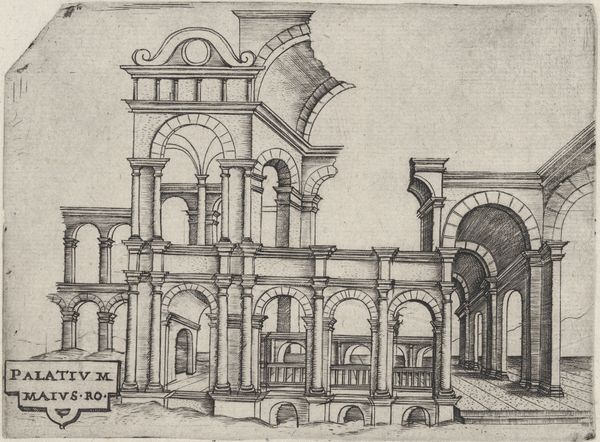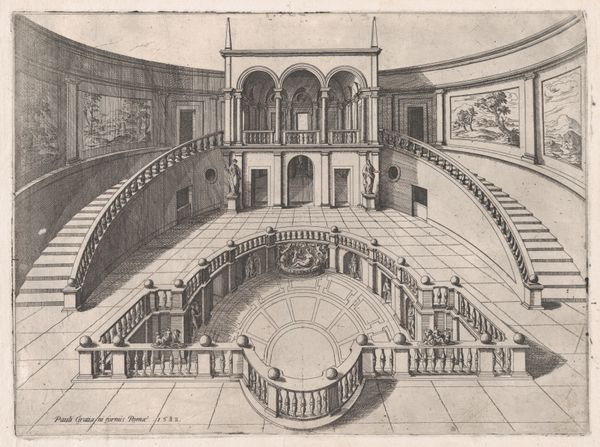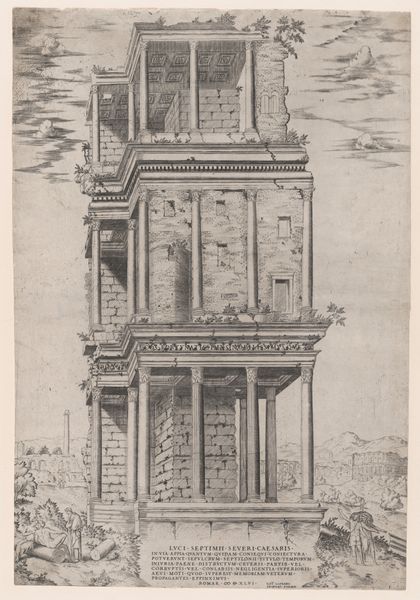
Arcus Vespasiani, from a Series of Prints depicting (reconstructed) Buildings from Roman Antiquity 1530 - 1550
0:00
0:00
drawing, print, etching, engraving, architecture
#
drawing
# print
#
etching
#
landscape
#
11_renaissance
#
arch
#
engraving
#
architecture
Dimensions: Plate: 5 11/16 × 3 7/16 in. (14.4 × 8.7 cm) edges of the plates are not straight, the height varies from 14.05-14.4]
Copyright: Public Domain
Curator: Immediately, the textures pull you in. The rough stonework contrasting with the smooth columns. It’s striking. Editor: This etching, entitled Arcus Vespasiani, from a Series of Prints depicting (reconstructed) Buildings from Roman Antiquity, dates to somewhere between 1530 and 1550, made by Monogrammist G.A. and the Caltrop. We see here the remnants of a once-grand Roman structure. Curator: There’s such attention to the linear quality of the etching—look how it delineates every stone, every brick. This emphasizes the modular nature of construction at the time. How materials were gathered, shaped, and joined. Editor: Precisely! It's intriguing how the artist renders architectural elements almost diagrammatically. The strong horizontal lines, paired with the repetitive verticality of the columns, impose a very strict order on what appears, at a glance, to be decay and ruin. Curator: Do you think that's just aesthetic? It brings forth that the labour itself would have required enormous logistical feats of extraction, transportation and assembly of standardized units of building material. Editor: Undeniably! We have these almost rhythmic modulations and balances achieved between light and shadow using nothing but line. Notice how it lends depth but, simultaneously, flattening the space, directing the eye along clear visual pathways. Curator: It reminds us about access to labor, material sourcing, even enslavement: how materials make architecture and architecture makes power, if we see past the illusion of artistic genius. Editor: A potent perspective, highlighting how material realities inform aesthetic experience. But this rendering also underscores classical ideals, where clarity, symmetry, and balanced proportions converge—it makes it so compelling, doesn't it? Curator: It compels, but also implicates in wider socio-economic relations that make building, ruin, and reconstruction possible. Editor: Indeed, it brings many possible discussions to the table. I must say, thinking of how it stages decay really has given me something new to ponder, however. Curator: As it has me. What begins in decay can teach a lot about processes and creation, about material value and, yes, power itself.
Comments
No comments
Be the first to comment and join the conversation on the ultimate creative platform.
